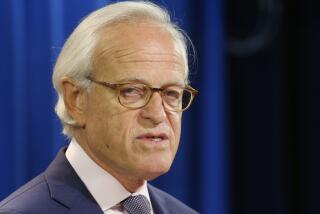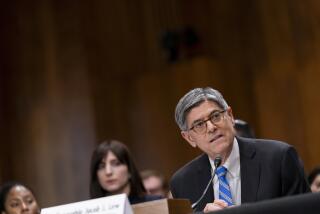Longtime U.S. Moscow Envoy Is Leaving Post
- Share via
WASHINGTON — Arthur A. Hartman, the career diplomat who sized up four Soviet leaders and helped prepare two superpower summit meetings as the U.S. ambassador to Moscow, is leaving the post early next year, the State Department announced Thursday.
Hartman’s assignment of more than five years is the longest of any U.S. ambassador to the Soviet Union since World War II.
White House and State Department officials said they expect John Matlock, chief Soviet expert on the National Security Council staff, to replace Hartman.
President Reagan and Secretary of State George P. Shultz paid tribute to Hartman, and State Department spokesman Charles Redman said the change was by choice of the ambassador. But Hartman told friends at a Christmas party in Moscow that he “was being recalled” to Washington.
Willing to Remain
Hartman told guests at the party that he would have been willing to remain for the final two years of the Administration, but officials decided it would be more difficult to get a suitable replacement for a period shorter than two years.
The 60-year-old Hartman, a tall and cautious New Yorker, was not known as an ideologue during his 32-year career.
He was closely identified with Secretary of State Henry A. Kissinger in the Gerald R. Ford Administration, serving as the assistant secretary for European affairs. But, even though former President Jimmy Carter criticized Kissinger’s handling of foreign affairs, he named Hartman ambassador to France in 1977.
Hartman was not known as a specialist in Soviet affairs before Reagan sent him to Moscow in September, 1981. There, Hartman reflected the harsher tone toward the Kremlin that typified the conservative Administration.
‘A Major Player’
In a statement, Reagan said he would miss Hartman’s “wise counsel” and called him “a major player in the arena of U.S.-Soviet relations.”
Hartman helped Reagan and Shultz with arrangements for the summit meetings held with Soviet leader Mikhail S. Gorbachev in Geneva in November, 1985, and in Iceland last October.
He saw the top job at the Kremlin pass from Leonid I. Brezhnev to Yuri V. Andropov in 1982 and then to Konstantin U. Chernenko in 1983 before Gorbachev was named leader in March, 1985.
Gorbachev then undertook a major diplomatic offensive that called for deep cuts in nuclear weapons and a halt to the U.S. anti-missile program known as “Star Wars.”
More to Read
Sign up for Essential California
The most important California stories and recommendations in your inbox every morning.
You may occasionally receive promotional content from the Los Angeles Times.










